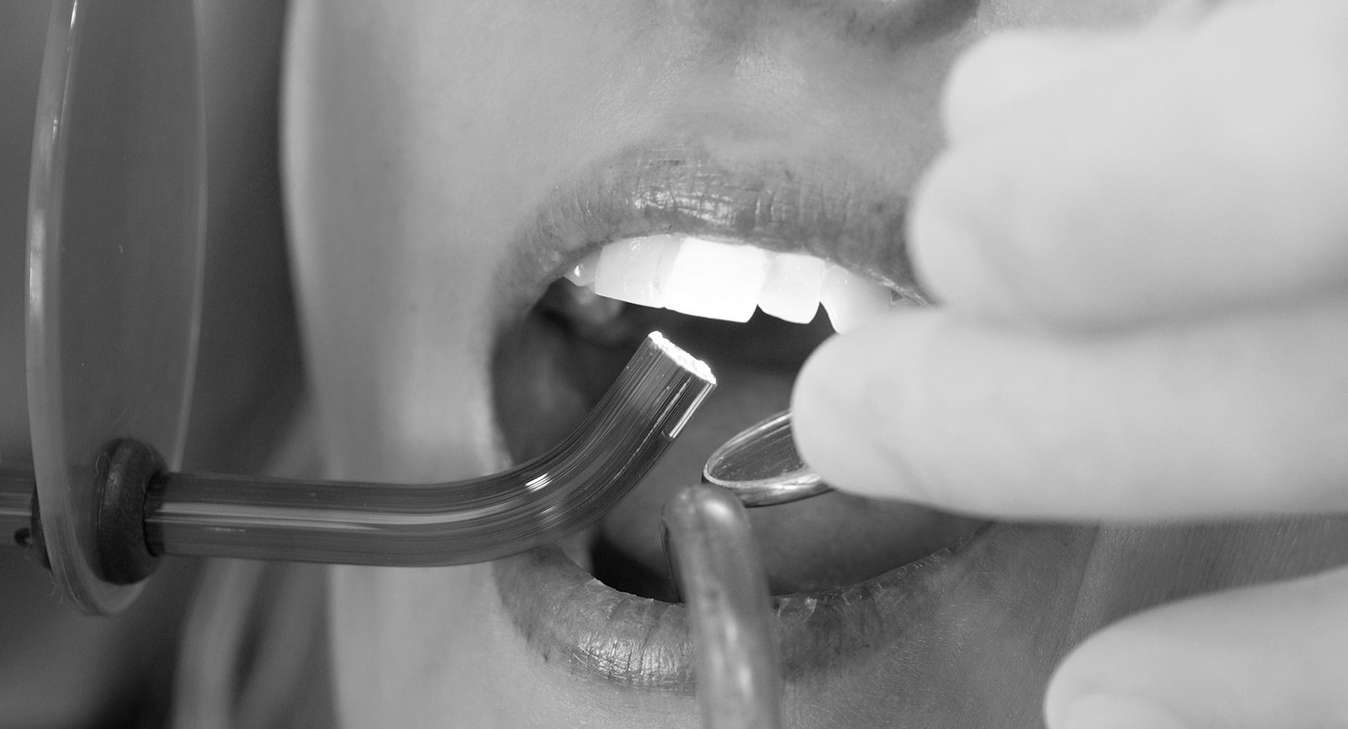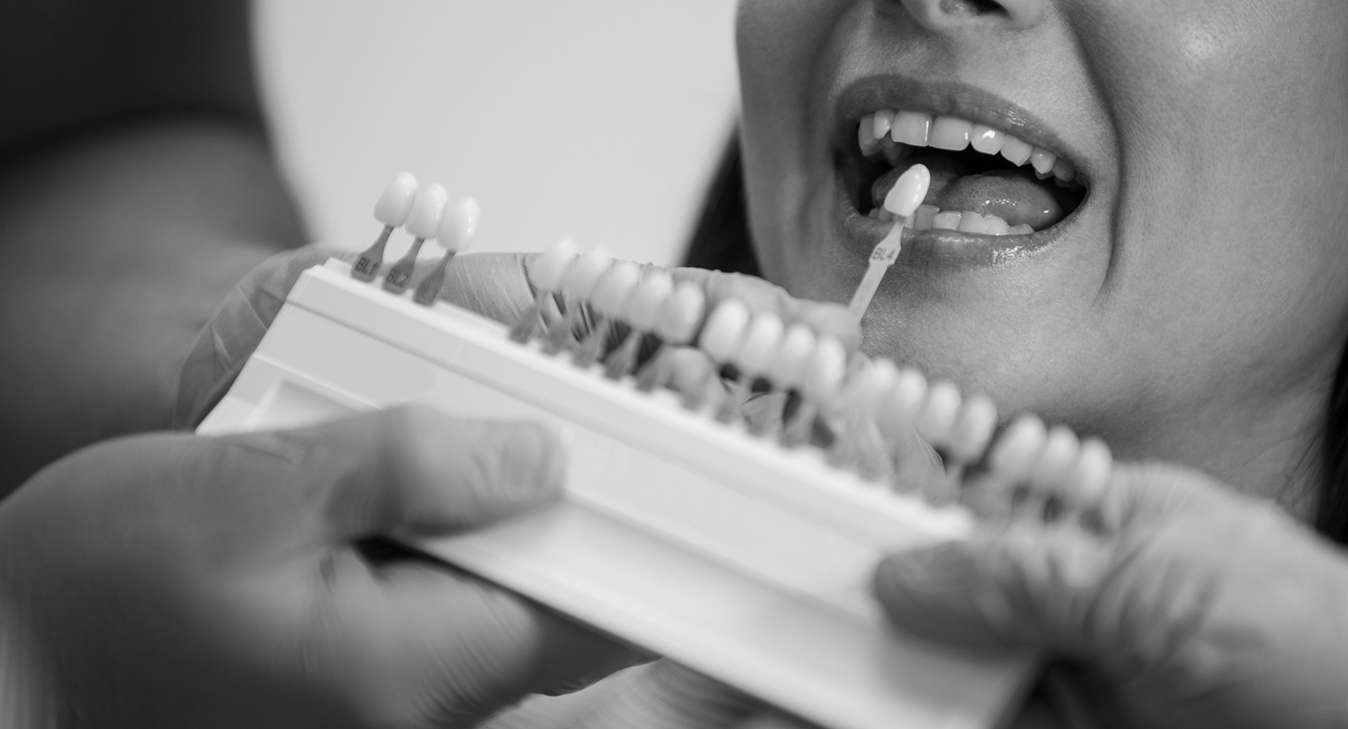What Is Dental Bonding?
Dental bonding is a cosmetic dental procedure that involves applying a tooth-colored composite resin to repair chipped, cracked, or discolored teeth. The resin is molded and shaped to match the natural appearance of the tooth, then hardened with a special light to bond it securely. This process enhances the tooth’s appearance and restores its functionality, providing a seamless and natural look. Dental bonding is a quick, minimally invasive treatment that typically requires only one visit to the dentist and is affordable.
What to Look For When Getting Dental Bondings in Buenos Aires.
Dental bonding is a popular cosmetic treatment for fixing chipped, cracked, or broken teeth. Many people opt for this minimally invasive procedure to restore their smile. On this page, you’ll find the key details about dental bonding and learn what to expect.
- Is My Case Suitable for Bonding
- What Does Dental Bonding Cost
- Dental Bonding in Argentina


Is My Case Suitable for Dental Bonding?
Whether dental bonding is right for you depends on factors such as the extent of damage and your overall dental health. It’s well-suited for minor chips, cracks, or discoloration, but more extensive issues might need a different approach. A qualified dentist can evaluate your situation and help determine the best option. Get in contact with one of our network below.
Benefits of Getting Dental Bonding in Buenos Aires.
Although dental bonding is a straightforward and minimally invasive procedure, there are good reasons why having this treatment done in Argentina can be an interesting option for you.
Cost-Effective Solution
If you’re considering dental bonding in Buenos Aires, you might appreciate that some patients have found it to be a budget-friendly option compared to treatments in other countries. For instance, one traveler mentioned having more funds left over to enjoy a local tango show after their appointment. While every experience is unique, it’s worth discussing all your financial questions during your consultation.
Quick and Painless Procedure
Dental bonding is often noted for its efficiency. Some patients have completed their bonding in a single visit—perfect if you have a busy travel schedule. Imagine getting your treatment done in the morning and then spending your afternoon exploring vibrant neighborhoods. Of course, each case is different, so talking with your dentist will give you a clearer picture of what to expect.
Minimally Invasive
Many patients value that bonding tends to be a gentle procedure, preserving most of your natural tooth structure. For example, you might hear that the procedure felt surprisingly light and conservative, which can be reassuring if you’re concerned about more extensive treatments. Always remember that your dentist can explain how this approach fits with your own dental health.
Natural Appearance
A key aspect of dental bonding is achieving a look that matches your natural teeth. Your dentist will work to color-match the bonding material, aiming for a subtle improvement that enhances your smile without looking obvious. Some patients have shared that they were pleased to see the adjustment blend so well with their existing teeth, offering an enhanced yet natural appearance.
Minimal Downtime
One of the great things about dental bonding is that it typically involves minimal downtime. You might find that after the procedure, you’re able to continue your travel plans without significant interruption—whether that’s joining a local cooking class or simply strolling through a park. Your dentist will let you know what kind of care you’ll need right after treatment.
Improved Confidence
Many people have expressed that even small improvements in their smile can make them feel more at ease in social settings. Perhaps you’ll find that having a refreshed look makes it easier to enjoy business meetings or social gatherings while abroad. Ultimately, feeling comfortable with your smile can be a helpful boost, though every patient’s experience is individual.
The Procedure of Dental Bonding Abroad.
When you’re considering dental bonding while abroad, it’s natural to want to know exactly what to expect. Here’s a clear outline of the main steps and some tips to help you feel more comfortable throughout the process.
Steps Before, During and After Dental Bonding.
When you choose dental bonding to enhance your smile or repair a chipped tooth, knowing what to expect can help you feel at ease. We’ve laid out the key steps before, during, and after treatment so that you’re well-prepared.
Initial Dental Consultation
When you consider dental bonding, your journey begins with an initial consultation. During this visit, your dentist will examine your teeth and gums—using tools like X-rays, if needed—to get a clear picture of your dental health. You’ll discuss your goals and any questions you have, which helps set expectations for the process.
Treatment Preparations
Before your appointment, your dentist might suggest a professional cleaning to remove any plaque that could interfere with the bonding process. You may also be advised to avoid staining foods or drinks—like coffee or red wine—for about 24 hours before the procedure. For many dental travelers, the bonding itself is designed to be efficient and convenient.
The Dental Bonding Itself
During the procedure, the dentist carefully selects a composite resin color that matches your natural teeth. They gently prepare the tooth by roughening the surface and applying a conditioning liquid. The resin is then applied, shaped, and hardened with a curing light. Finally, the dentist polishes the bonded area so it blends seamlessly with your smile.
Post-Procedure after Bonding
After bonding, taking good care of your teeth is essential. You’ll be advised to avoid foods and drinks that could stain the resin, and to stick with gentle brushing and flossing. Regular dental check-ups will help monitor the bonding, and your dentist may provide tips on avoiding habits like nail-biting or chewing hard objects. These simple steps help ensure you continue to enjoy the benefits of your treatment.
Cost of Dental Bonding.
The U.S. versus Argentina.
In the U.S., dental bonding usually costs between $600 and $2000 per tooth. In Argentina, prices are often lower, making it a cost-effective option.
| Dental Bonding Treatment | US & Canada | Argentina |
|---|---|---|
| Initial Consultation | $100-$250 | $50-$100 |
| Dental X-rays | $50-$200 | $20-$50 |
| Tooth Surface Preparation | $100-$300 per tooth | $50-$150 per tooth |
| Composite Resin Application | $200-$600 per tooth | $100-$300 per tooth |
| Bonding and Shaping | $150-$400 per tooth | $80-$250 per tooth |
| Polishing and Final Adjustments | $100-$300 per tooth | $50-$150 per tooth |
| Total Cost per Tooth for Dental Bonding | $650-$2,050 | $330-$1,000 |

Alternative Cosmetic Treatments to Bonding.
There are a few alternatives to dental bonding, such as veneers, crowns, and teeth whitening. Veneers cover the front of your teeth and can offer a more durable, stain-resistant solution. Teeth whitening, on the other hand, can brighten your smile without changing the structure of your teeth. If you’re interested, you can find a detailed comparison of these options on a separate page.
Choosing an Experienced Dentist
For Dental Bonding in Argentina.
Dental bonding is a straightforward procedure, but achieving natural results relies on the skill of your dentist. The outcome depends on their precision and experience. For tips on selecting an experienced dentist abroad, check out our guide.
Detailed Guide
To Choose a Dental
Clinic Abroad
Before and After Reviews Photos.
There are a few methods you can use to verify the experience of the dentist performing your dental bonding.
Why it’s important: Before-and-after photos are a great way to see what dental bonding can achieve. They help set expectations and show the dentist’s skill. However, photos alone don’t tell the full story—durability, comfort, and proper bite alignment are also crucial factors.
What to look for: In addition to photos, compare them with detailed patient reviews. Feedback from previous patients gives you insights into how well the bonding holds up over time and if it remains both functional and aesthetically pleasing. Look for reviews that mention long-term results and overall satisfaction.
Essential to remember: While before-and-after photos are reassuring, patient reviews offer a more complete picture. A successful bonding treatment should enhance your smile, feel natural, and last for years. Checking both images and reviews helps ensure you choose a dentist who delivers high-quality results.
Essentials to Choose a Specialist for Bonding.
When considering dental bonding in Buenos Aires, Argentina, it’s essential to thoroughly evaluate the expertise and experience of the dentist.
Why it’s important: The quality of your dental bonding depends on the dentist’s skill and experience. A skilled professional ensures natural-looking, durable results and a smooth, stress-free experience.
What to look for: Choose a dentist with solid experience in dental bonding, preferably trained at institutions like the University of Buenos Aires. Certifications from organizations like the Argentine Society of Esthetic Dentistry reflect high standards. A dentist using digital imaging for treatment planning is also a good sign.
Essential to remember: Experience matters. Look for a dentist with at least ten years of expertise and a proven track record in dental bonding. Ensure the clinic follows strict sterilization procedures and uses modern equipment for safety and effectiveness.
- Studied Aesthetic Dentistry
- Prefferably a Prosthodontist
- Ask For a Detailed Treatment Plan
- Digital Imaging Improves the Result
Subjects to Take Into Account for a Dental Bonding Treatment in Argentina.
Aside from the more general considerations which are important when getting dental bonding abroad, there are some other specific subjects worthwhile to get informed about.
Communication With Dentist
Clear and open communication with your dentist is essential for a smooth experience. A clinic that offers various ways to stay in touch—like email, phone, or video calls—can help you feel informed and supported throughout the process. Knowing you can easily reach out with any questions or concerns will make your treatment journey more comfortable.
Know the Materials Used
It’s important to understand the materials being used for dental bonding. During your consultation, ask your dentist to explain the procedure and the types of materials they use. Ensure that high-quality composite resin is being used for a durable and natural result. Also, reviewing before-and-after photos of previous patients can give you a clearer idea of the outcome you can expect. This will help you feel confident in your choice.
Cost Transparency and Value
Being clear about the cost of dental bonding and the materials used is crucial to setting realistic expectations. High-quality composite resin is often used to ensure the bonding blends naturally with your teeth while offering durability. Asking to see before-and-after photos of previous treatments can also help you assess the value and the quality of results.
Post-Procedure Care
Taking care of your bonding after the procedure is key to keeping your smile looking great. A reputable clinic will provide you with clear aftercare instructions, and some may even coordinate follow-up care with your local dentist. By following these steps, you can help extend the life of your bonding and keep it looking its best.
Potential Complications
While dental bonding is generally safe, there’s a chance the material could chip or stain over time. To prevent issues, avoid certain foods and maintain good oral hygiene. It’s also important to know what to do if something goes wrong, such as seeking touch-ups to maintain your smile’s appearance.
Why Dental Bonding
With Teeth Travelers Excels.
Dental bonding is a trusted option for both restorative and aesthetic treatments. With over 1,200 procedures in 13 years, the dentists in our network bring extensive experience to these treatments. Explore more reasons why people choose us for their dental care abroad.
Getting Your Bonding Done Through Us
Prices of Dental Bondings.
Straightforward and Simple.
The boutique dentists we work with offer fixed-price dental bonding packages with clear, transparent costs and no hidden fees. If additional work is required, the treatment can be adjusted accordingly, and you’ll always receive an upfront price quote.
Bonding Regular
Treatment duration between 1-3 daysSame Day Treatment
-
Scan & Pro-Cleaning
-
Composite Bonding*
-
Online Aftercare
-
Follow-up Dentistry at Home
-
Material Guarantee
*Composite Bonding for 1 Tooth
A Direct Agreement with The Dentist
Bonding Smile
Treatment duration between 1-3 daysSame Day Treatment
-
Scan & Pro-Cleaning
-
Composite Bonding*
-
Professional Whitening
-
Online Dental Care at Home
-
Material Guarantee
*Composite Bonding for 1 Tooth
A Direct Agreement with The Dentist
Bonding Premium
Treatment duration between 2-3 daysSame Day Treatment
-
Scan & Pro-Cleaning
-
Smile Makeover Light*
-
Personal Care Plan
-
Follow-up Dentistry at Home
-
Material Guarantee
*Includes a Whitening and Full Bondings
A Direct Agreement with The Dentist
Patient Reviews of Dental Bonding.
We are pleased to share the experiences of patients who have undergone dental bonding treatments with the dentists in our network. Take a moment to see how they have assessed their treatments.





Plan an Intake. Online. For Free.
If you’re considering dental bonding, it might be worthwhile reaching out to one of the prosthodontists in our network. Schedule a free online intake to learn more about the benefits and procedure.
Frequently Asked Questions (FAQs) on Dental Bonding Abroad.
Since dental bonding is a common procedure carried out abroad we highlight the most frequently asked questions in this section.
How much is composite bonding for 4 teeth?
The cost of composite bonding for 4 teeth in Buenos Aires, Argentina, typically ranges between $400 and $2,000, depending on factors such as the complexity of the case and the expertise of the dentist. On average, you can expect to pay around $150 to $400 per tooth for high-quality composite bonding. This treatment is an affordable and effective option for improving the appearance of teeth by covering imperfections such as chips, gaps, or discoloration.
Is bonding cheaper than veneers?
Yes, dental bonding is generally more affordable than veneers. Bonding is a minimally invasive, cost-effective solution ideal for addressing minor cosmetic issues such as chips, gaps, or discoloration. While veneers offer a more durable and aesthetically refined result, they are significantly more expensive due to the materials used and the extensive preparation required. For those looking to improve their smile on a budget, bonding is typically the cheaper and faster option.
Is composite bonding worth the money?
Yes, composite bonding is generally worth the money for those looking to improve their smile without the high cost of veneers or crowns. It is a cost-effective, minimally invasive option that can effectively address minor cosmetic issues such as chips, gaps, or discoloration. While it may not be as durable as other treatments, composite bonding provides significant aesthetic improvements at a fraction of the cost, making it an accessible choice for many.
How many years does composite bonding last?
Composite bonding typically lasts between 5 to 7 years, but with excellent care, it can extend up to 10 years. The longevity of composite bonding depends on factors such as the location of the bonded tooth, the extent of the bonding, dietary habits, and how well you maintain your oral hygiene. Avoiding hard foods and maintaining regular dental check-ups can help maximize the lifespan of your composite bonding.
What are the disadvantages of teeth bonding?
Teeth bonding has several disadvantages to consider. While it is an affordable and quick cosmetic treatment, the material used in bonding is not as durable as other options like veneers or crowns. Bonding material is prone to chipping and cracking, especially if you have habits like nail-biting or chewing on hard objects. Additionally, although it is somewhat stain-resistant, it does not resist stains as effectively as porcelain restorations, meaning it may discolor over time, especially if you consume coffee, tea, or tobacco. Bonding may also require touch-ups or replacement more frequently compared to more permanent solutions.
What is the alternative to tooth bonding?
If you’re looking for an alternative to tooth bonding, dental veneers are a popular option. Veneers are thin, custom-made shells that are bonded to the front surface of your teeth, offering a more durable and long-lasting solution. Unlike bonding, veneers can significantly change the color, shape, size, and length of your teeth, providing a more comprehensive aesthetic enhancement.
Another alternative is dental crowns, which cover the entire tooth and are particularly suitable for severely damaged or decayed teeth. For minor cosmetic adjustments, teeth whitening and orthodontic treatments like braces or clear aligners may also be considered, depending on your specific dental needs.
Can bonded teeth be whitened?
Bonded teeth cannot be whitened in the same way as natural teeth because the bonding material does not respond to traditional teeth whitening treatments. Over time, bonding material can stain or discolor from foods and drinks, but professional solutions like replacing the bonding or polishing the material are available to restore the original color.
If whitening is desired, it’s best to consult a dentist who may recommend alternatives such as replacing the discolored bonding or using veneers for a more uniform appearance.
Ask Your Question
At Teeth Traveler, we’re here to share helpful information — not to offer medical advice. This information on this page is for general informational purposes only and does not constitute medical advice, diagnosis, or treatment. Teeth Traveler is not a healthcare provider and does not offer medical services. The clinics listed on our platform operate independently and are responsible for the care they provide. While we aim to offer helpful guidance, readers are encouraged to consult directly with licensed dental professionals before making healthcare decisions or pursuing treatment abroad. No rights may be derived from the information provided on this page. For more details, check our disclaimer and terms of use.
